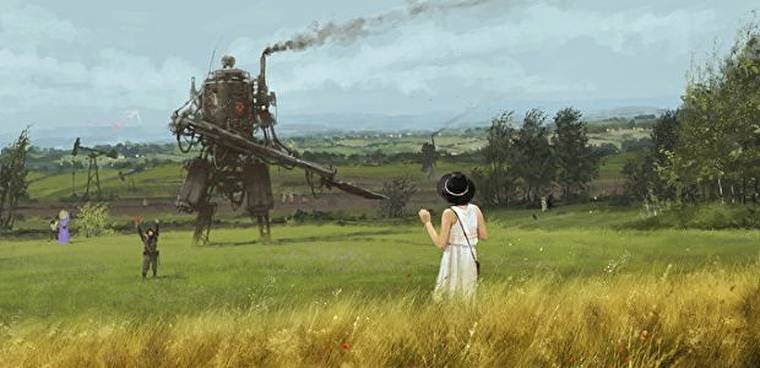Djinn Sultanate
Sand, sand and more sand. That's all outsiders see when they look at the Sultanate. And they'd be right. Look closer however, and you'll find an oasis in the sea of sand. A gem amid the heat...I still hate the sand though. It worms it's way into everything.
-Sili Zorlu, Brass Lamp Janisarie
Structure
The Sultan
The Sultan's Vizier
The Agab-Beraji (Royal Lords)
The Ajemefendi (Military lords)
Culture
The Sultan is paramount to the Djinn, viewed as having a divine right to rule. Any resistance to the Sultans forces and edicts is punished rapidly and harshly. Even those of high birth can't necessarily escape those punishments.
Assets
Mundane Spices
Okkejas (Fire Tumeric)
Halejas (River Tumeric)
Jaliji
Further arcane spices
- 654,000 Brass-Lamp Janissaries
- 345 Combat Constructs (Arcane)
- 43 Naval combat ships
History
An empire built on spice...not that such an empire is anything unique. It's the spices themselves that make the Sultanate special. Produced by groups of specialized enchanters known as spicecrafters, the spices that flow from the Sultanate can do anything from giving one visions of the future to summoning the dead.
However, spice is not the only thing that defines the Sultanate or the Djinn as a people. The Djinn have a...complicated history, even in comparison to the other races in the world. Like many of the more 'arcane' races that exist on Sol Nua, they were deposited some time during the Age of Shattered Veils. While most species attempted to reconstruct the society that they had before, or scattered to the winds, the Djinn faced a struggle. Their ruler, the Sultan didn't seem to have been deposited with them or had died in the event. To exacerbate the issue, a subspecies of the Djinn; those with yellow skin, attempted to seize control of the species and caused a civil war. What few records survived the Age of Shattered Veils state that this group claimed mistreatment, though little proof exists.
That civil war lasted until the Age of Wounds, where the loyalist forces finally drove the yellow-skinned Djinn into the desert where they continue to exist as tight-knit nomadic tribes. After the war, it turns out that the Yellow-skinned Djinn had actually trapped the Sultan, and hid him away so that their opposition would lake leadership. It took a few years for the magicians of the Sultanate to extract their Sultan from his brass prison, but when he was finally freed, he quickly took command and re-established his nation in the middle of what is now known as the Genies Desert.
An inherently magical people, it was and is a relatively simple matter for the Sultanate to create sustainable settlements in an otherwise inhospitable environment. This has lead to the Djinn to completely dominate their homeland and maintain a firm grip on their spice trade due to the inherent cost that the climate and terrain incur on outsiders coming in. It is much more cost-effective to simply buy the spices that flow out of the borders. Steadily, the number of villages that produce both the magical and non-magical spices that the nation is famous for have grown, and show no sign of stopping. For good or ill.
While the nation grows, the threat of the Yellow Djinn on the nation's stability is still very real. They might not have the organization or grandeur they used too in past centuries, but they still have the will to fight that originally sent them on their current path. From hidden villages in the vast desert, they continue to wage guerilla war on the Sultanate and remain effective according to reports from outside sources. With some reports stating a loss of over 12 billion gold loss in revenue over the past two years. As such, the bounty on any Yellow Djinn has climbed quite high.
Demography and Population
99% Djinn
1% Assorted
Military
Brass-Lamp Janissaries : While, from the outside, the Sultanate seems to lack the specialized units of most modern militaries; this is actually far from the truth. The Brass Lamp Janissaries might be a single overarching military formation, but they are split up under different 'military lords'. These lords are traditionally relatives of the Sultan, or of lordly lineage in some way. In other words, commanded by the purple-skinned Djinn. The differences in command style between these lords generally leads to the soldiers under their command becoming specialized in different styles of combat.
Founding Date
22, Age of Wounds
Type
Geopolitical, Country
Demonym
Genie
Government System
Monarchy, Absolute
Power Structure
Unitary state
Economic System
Market economy
Currency
Royal Katis; A orange-ish note, bearing a sundered brass lamp on one side, and the Imperial Jewels on the other. Platinum, Gold, Silver, and Copper denominations.
Legislative Body
The Kalaj-Jahar, which translates to law writers, is an order traditionally maintained by the red-skinned caste of Djinn. A tradition that is held on to tightly by the Kalaj-Jahar.
Judicial Body
The Kalaj-Idar, literally Law Bringers, is an order traditionally made up of the blue-skinned caste of Djinn. In recent years, other skinned Djinn have joined in larger numbers, though the majority is still held by the blue.
Official Languages
Neighboring Nations


Comments